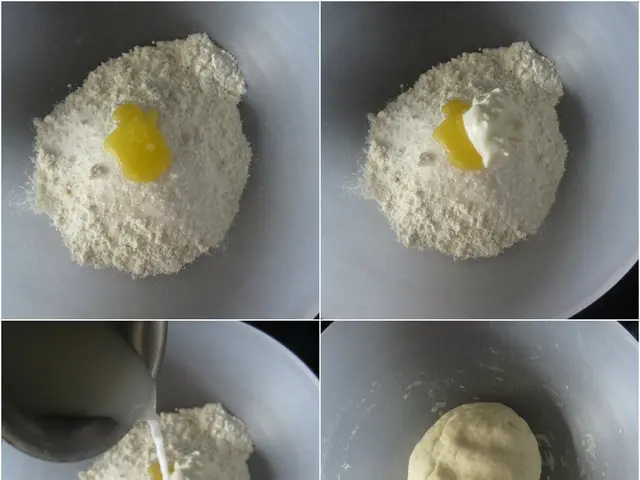Enhancing Motion and Daily Living Skills for Parkinson's Patients: Boosting Mobility and Independence through PT and OT
Struggling with Parkinson's disease? This guide's for you, buddy!
Embrace the power of physical and occupational therapy to smash your mobility issues and kick-start a life brimming with practicality!
Let's unfold this life-changing combo and rock your Parkinson's journey!
Hear this, my friend! Living with Parkinson's can be a teeth-gritting experience. But fret not—the combination of physical therapy and occupational therapy can bring you some real relief and spice up your life!
We'll break down the essentials, revealing how these therapies can help you bag better mobility, balance, and practical skills.
Educational MaterialsBooks, articles, videos and online courses that help caregivers understand Parkinson's disease and how to manage its symptoms effectively
Picture this: A aging man with Parkinson's living alone, struggling to take care of himself and manage daily tasks. As the disease progresses, he may experience tremors, slow movements, and stiffness, making handling official duties a daunting task.
Understanding Parkinson's is key to finding ways to tackle its challenges and maintaining independence. With nearly one million individuals battling Parkinson's in the UK alone, it's crucial we learn to manage this complex neurological disorder.
Support Groups
Parkinson's disease targets the brain cells responsible for producing dopamine—a chemical messenger that enables smooth muscle movement. Gradually, as dopamine levels deplete, this leads to motor symptoms like tremors, rigidity, slowness, and postural instability. But Parkinson's isn't that straightforward—it can also throw non-motor punches, including sleep disturbances, depression, anxiety, mood swings, cognitive changes, and more.
Local or online forums where caregivers can share experiences, advice and encouragement with others facing similar challenges
Now that you're acquainted with Parkinson's disease, let's dive into how physical therapy and occupational therapy come to the rescue!
Respite Services
The Power of Physical Therapy
Temporary relief options that allow caregivers time away from their responsibilities while ensuring their loved one receives appropriate care
Enter the game-changer: Physical therapy! When life presents challenges, this expert discipline helps you find your footing and steer through life's obstacles.
Physical therapists work side by side with you to turbocharge your mobility, balance, and general function, crucial for keeping independence intact as Parkinson's rolls along.
Professional Assistance
They kick off with a comprehensive evaluation of your particular needs, goals, and challenges to devise a personalised treatment blueprint, tailoring it to specific areas needing improvement (e.g., flexibility, coordination, endurance).
Access to healthcare professionals such as nurses or social workers who can assist in developing a personalised care plan tailored to the individual's needs
One area that's tackled head-on is gait training. This technique analyzes your current walking patterns and arms you with strategies to foster safer, smoother ambulation.
Meanwhile, muscle-strengthening exercises tighten the core muscle groups affected by Parkinson's, improving movement and lessening fatigue.
Financial Support
As you advance through your personalised program, your physical therapist keeps a keen eye and adjusts your treatment plan to account for those pesky evolving needs.
Information on financial assistance programmes that may be available for caregiving expenses
The Magic of Occupational Therapy
Next up: Occupational therapy! This discipline steps in to help you conquer practical life challenges despite those Parkinson's punches.
Occupational therapists are the QBs of daily living! They zoom in on your unique abilities and cognitive functions, focusing on adjusting those to ensure a seamless flow through your daily chores.
Specialised tools like adaptive equipment, home modifications, and cognitive strategies can make a world of difference, enabling you to live life more fully with Parkinson's. Imagine, engrossing yourself in your beloved hobbies while juggling Parkinson's—it's possible with occupational therapy!
Close collaboration between healthcare professionals, family, friends, and caregivers is crucial for driving personalised interventions and developing effective treatment plans.
Coming up: Combined therapies, customised treatment plans, and the benefits reaped by integrating these magical duo into your Parkinson's care plan!
So buckle up and prepare for a wild ride as we unleash the power of these therapies to turn your Parkinson's journey around!
Sources:
[1] Parkinson's UK. (2021). Physical and occupational therapy for people with Parkinson's. https://www.parkinson.org.uk/information-advice-and-support/treatment-and-medication/physiotherapy-and-occupational-therapy
[2] Parkinson's Life. (2020). Effective physical therapy for Parkinson's disease: Tips from experts. https://www.parkinsonslife.com/physical-therapy-tips-for-parkinsons
[3] Fahn, S. M., Elton, John A., eds. (2013). Diagnosis of Parkinson's disease. In Parkinson’s disease—Evidence-Based Management (pp. 31-56). American Academy of Neurology; American Neurological Association. https://go.gale.com/ps/i.do?p=ANIC&u=nov1_elib_ugs&id=GALE%7CA494959798&v=2.1&it=r&asid=4f1d3d70e7c2dfb1dd113aeba9c02787
[4] Laverty, N. M., Miller, A., Prigioniero, A., & Antoni, M. H. (2008). Occupational performance deficits in Parkinson's disease: A systematic review and meta-analysis. Disability and Rehabilitation, 30(13-14), 732-742. https://doi.org/10.1080/09638280600719302
[5] Delitto, A., & Rowe M. K. (2008). Ethical and legal issues in the provision of care to people with neurologic disorders. Current Treatment Options in Neurology, 10(4), 269-273. https://doi.org/10.1007/s11940-008-0025-1
Incorporate health and wellness into your daily routine with a combination of physical therapy and occupational therapy specifically designed for managing Parkinson's disease.
Educational materials like books, articles, videos, and online courses can provide caregivers with valuable insight on the symptoms of Parkinson's and methods for managing them effectively.
Support groups offer a platform for caregivers to share experiences, advice, and encouragement with others who are facing similar challenges.
Physical therapy helps to enhance mobility, balance, and overall function, which is essential for maintaining independence as Parkinson's progresses. Therapists tailor personalized treatment plans focusing on specific areas that need improvement, such as flexibility, coordination, and endurance.
Occupational therapy assists individuals in overcoming practical life challenges caused by Parkinson's, utilizing adaptive equipment, home modifications, and cognitive strategies. This allows people to fully enjoy their hobbies and engage with daily activities despite the disease.
Mental health, nutrition, and fitness and exercise are equally important components of a comprehensive approach to living with Parkinson's. Seek guidance from healthcare professionals to ensure a well-rounded treatment plan that addresses all aspects of the disease.








